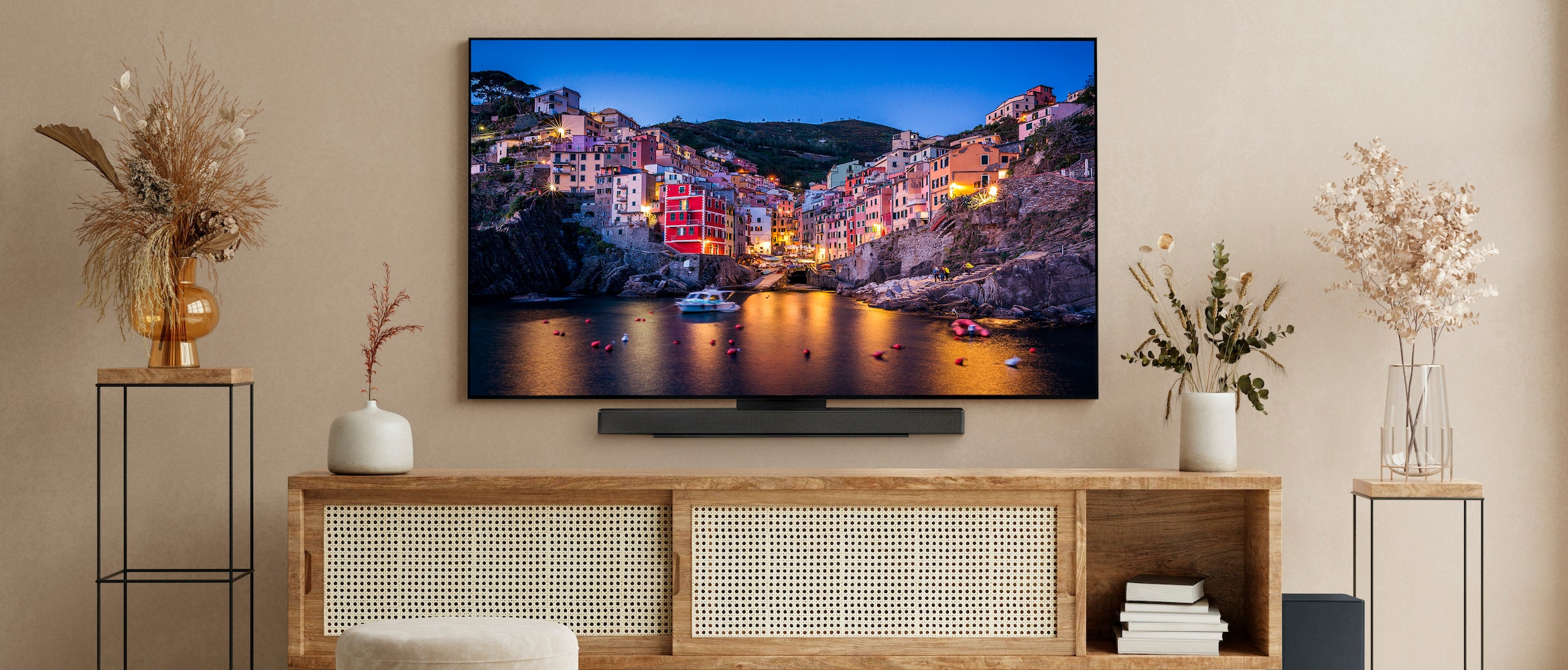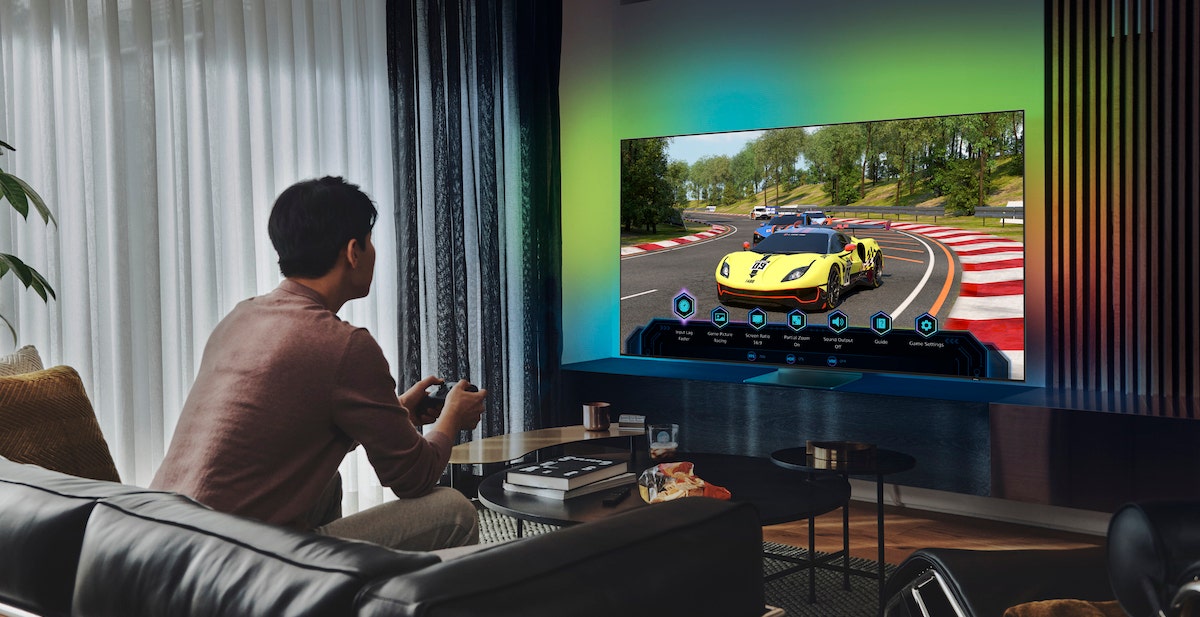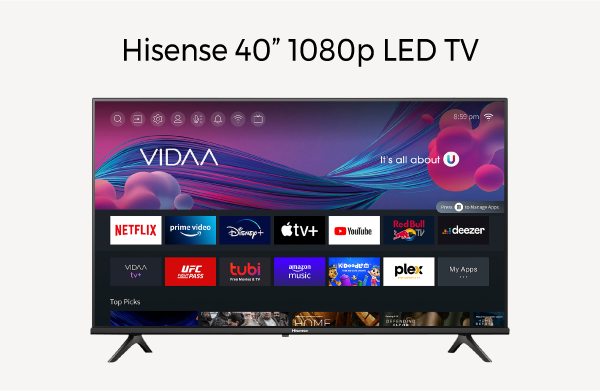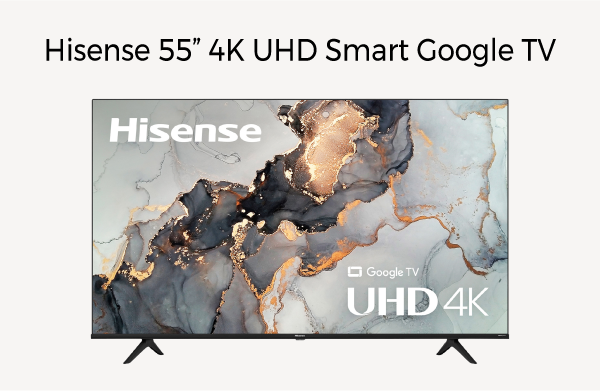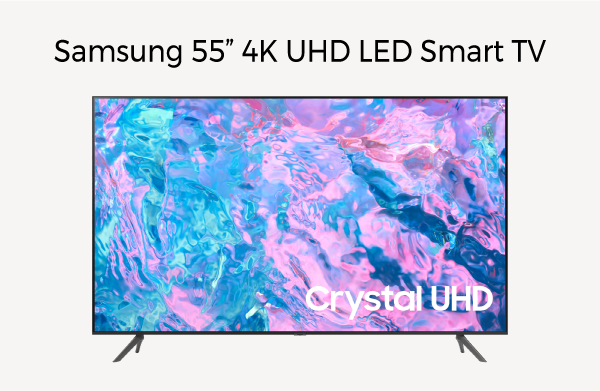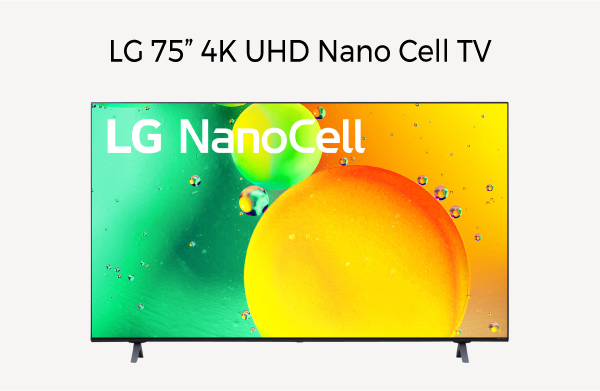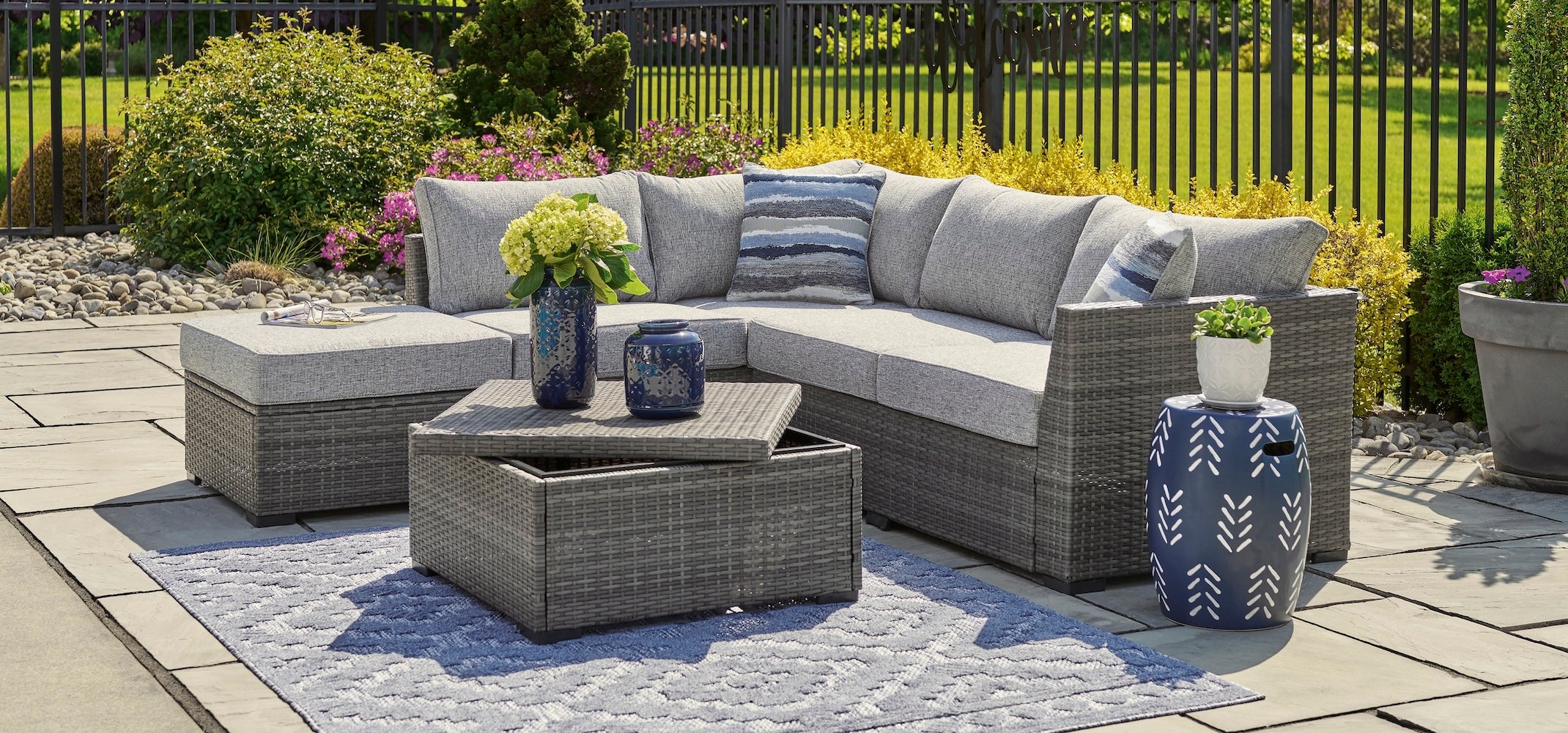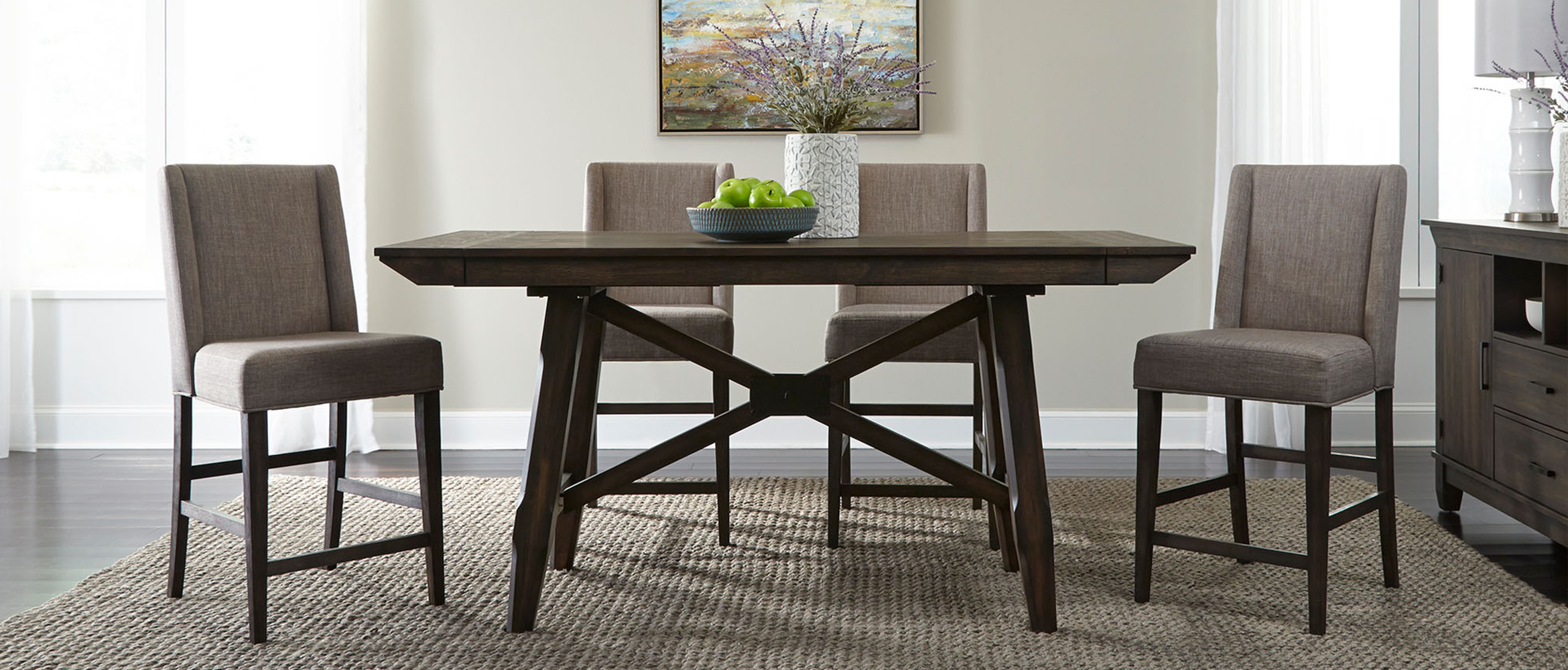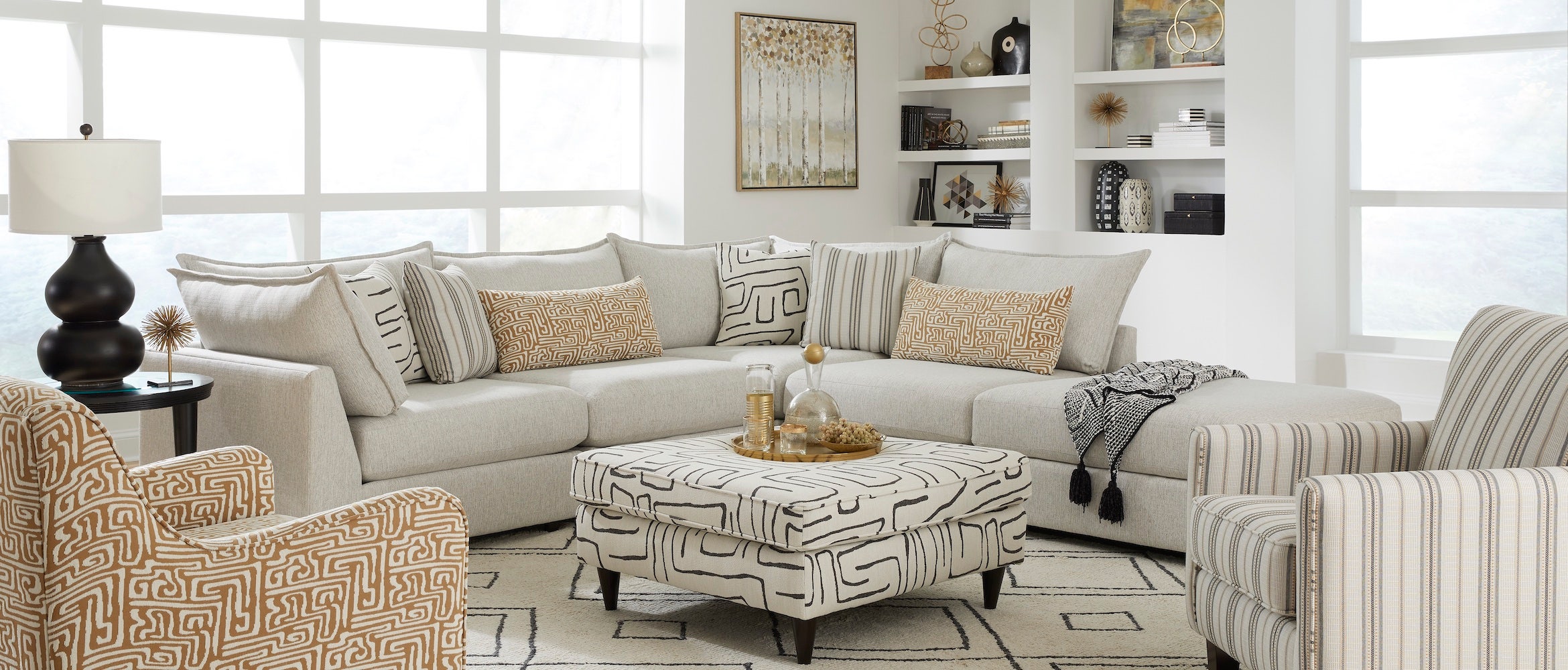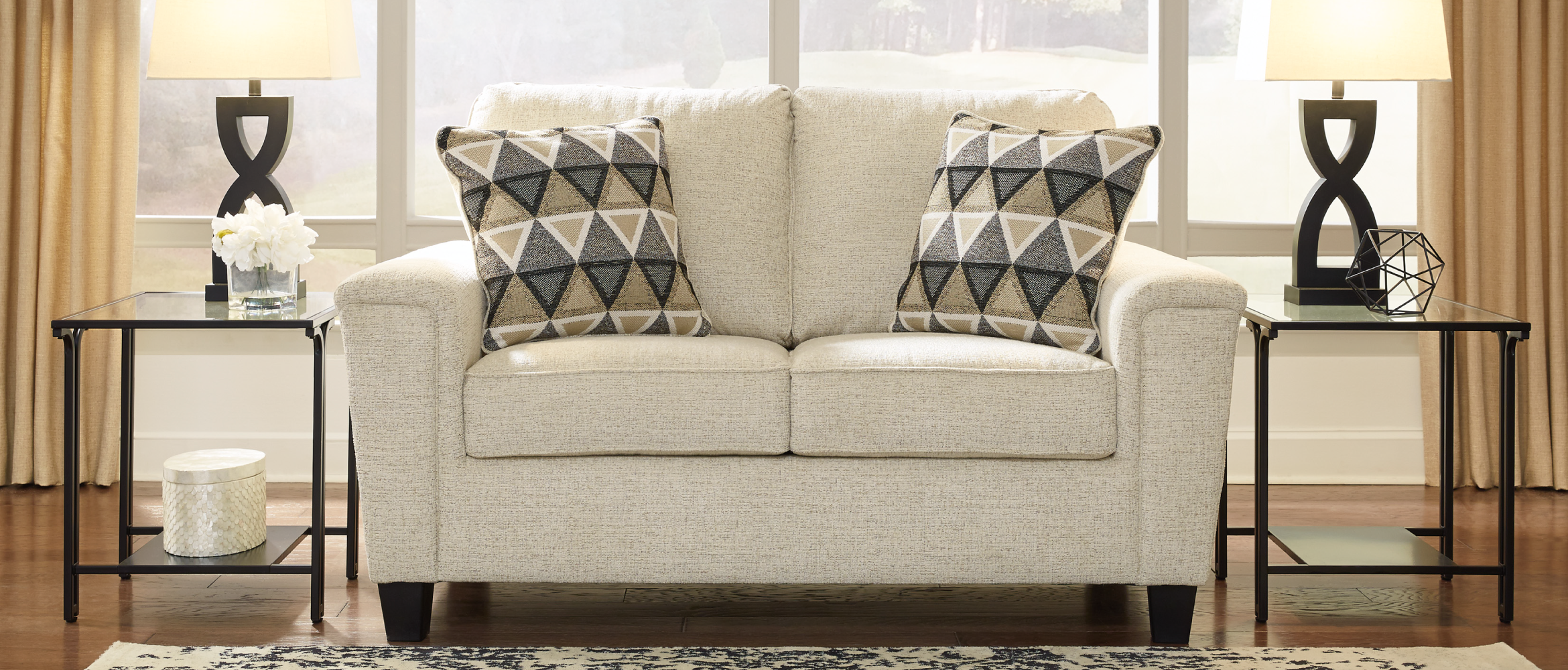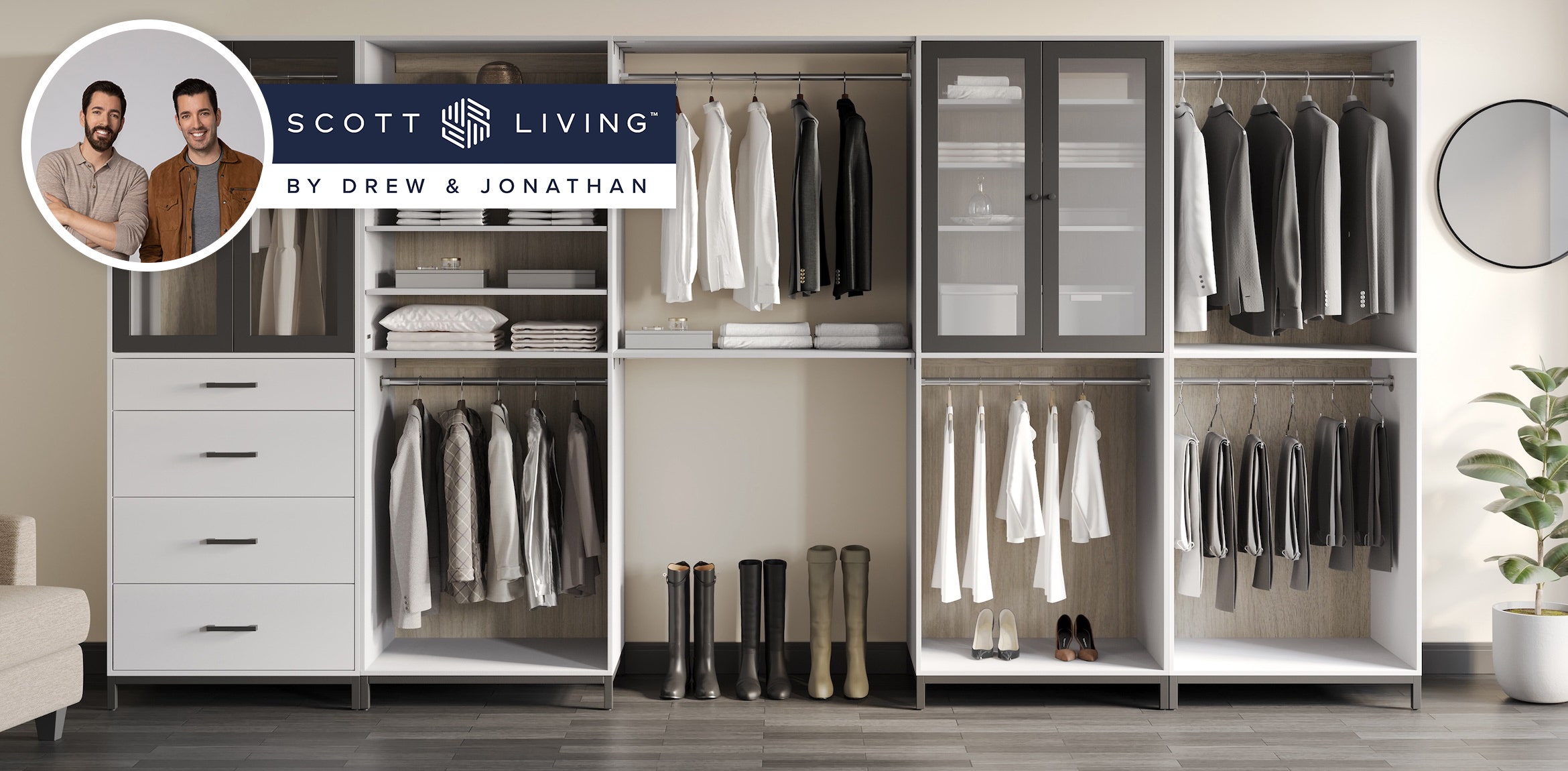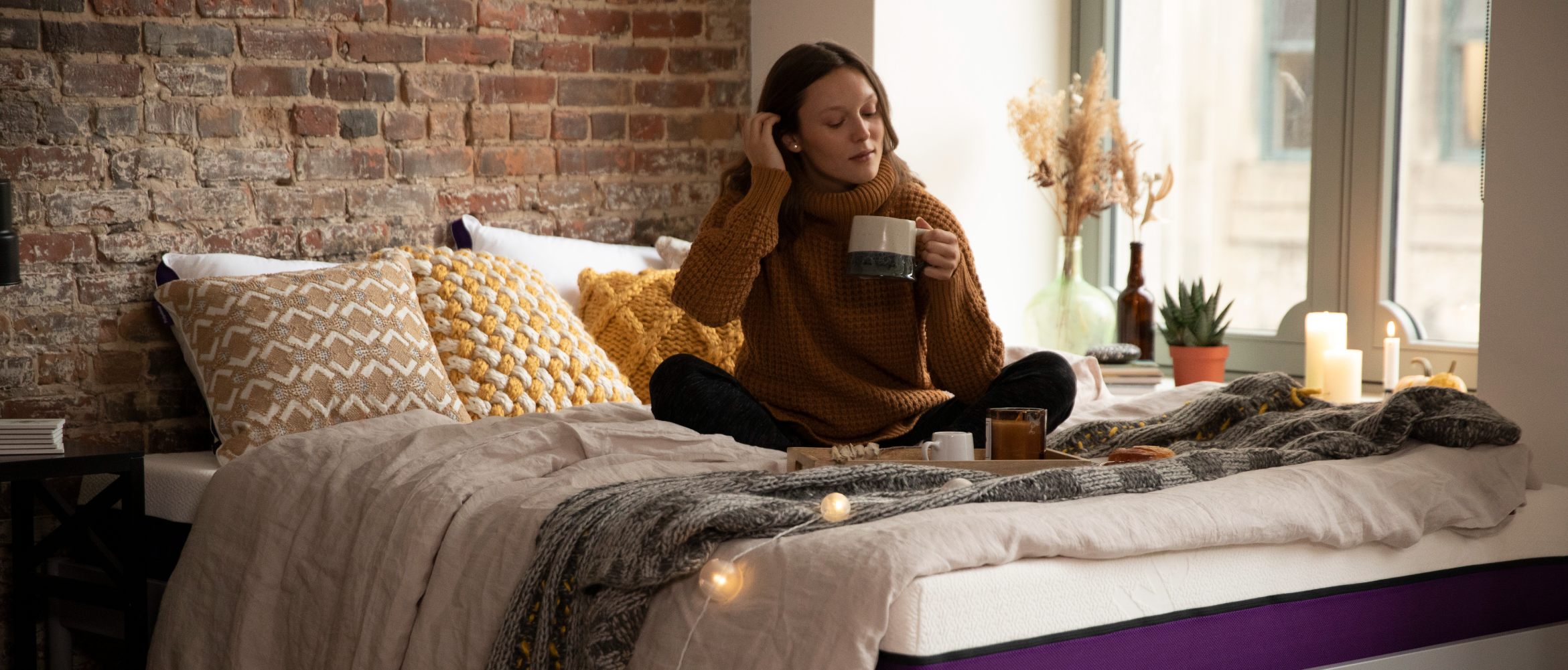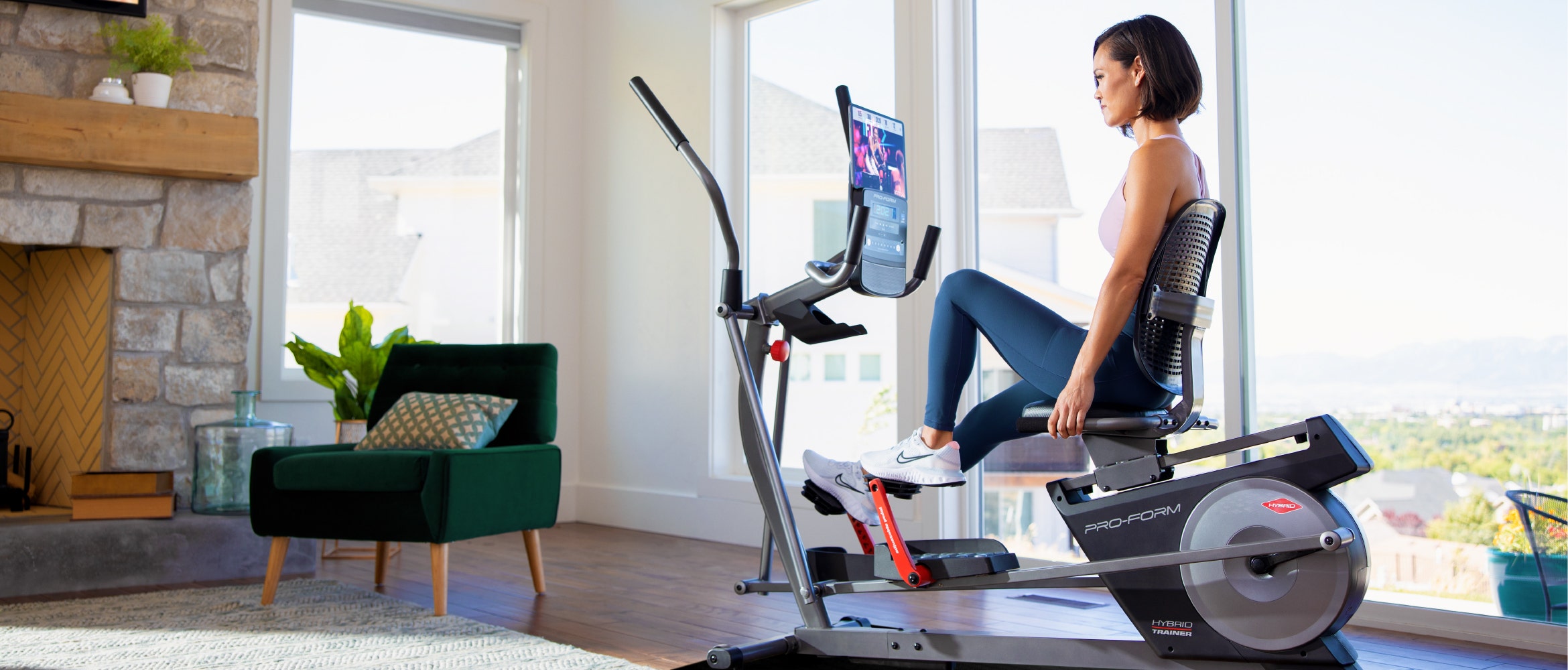By Tepperman's Staff
LED, QLED, OLED? 4K, 8K… IDK?? It’s tough to keep track of all these acronyms nowadays. But don’t sweat it! We are here to help simplify the process of selecting a new TV. Below, we have 3 points of consideration, along with our Buyer’s Picks at the bottom to help narrow your search.
1. Selecting The Right TV for Your Needs


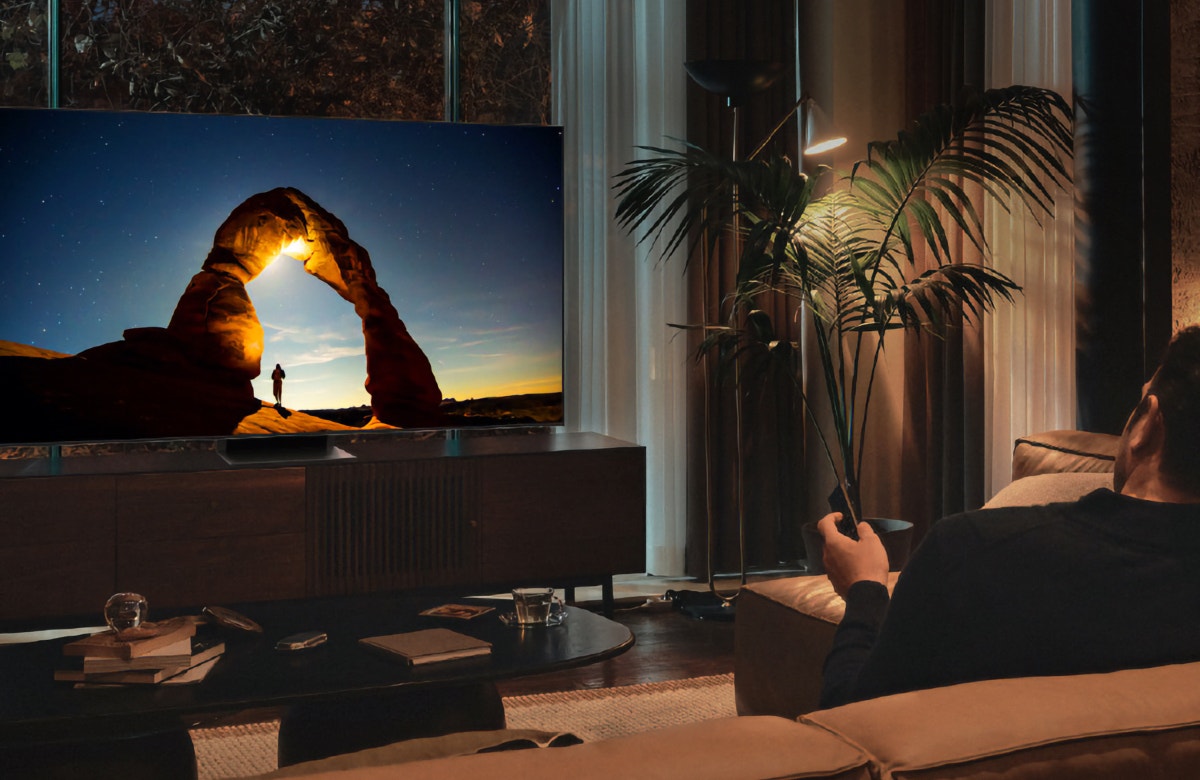

Buying a new TV is not a one-size-fits-all solution. The perfect TV depends on your needs and intended uses. To make things easy, we’ll start with some specs to look out for in some of the most typical uses:
Is your TV also being used as a decorative piece? Consider a Matte Display: Enjoy what's on TV, not the reflections on it.
Is your TV for watching movies and shows? Consider getting a TV with HDR (High Dynamic Range): If your TV meets the HDR standard, this means deeper blacks, more vibrant colours, and a more detailed image. Deep shadows aren't simply black voids, more details can be seen in the darkness – key for movie watchers.
Is your TV for gaming or action sports? Consider the Refresh Rate (measured in Hz): The higher the number, the faster your screen can draw new images and prevent a blurry picture.
2. The Acronyms: Displays Deduced
The TLDR (Too-Long-Didn’t-Read) summary is this: OLED = premium, LED = affordable. Higher display resolution / pixel ratio = sharper images and better picture quality. Consider a higher resolution if you plan to sit close to the screen.
Pick a TV on our website and compare its specs with the charts below to determine if the product is suitable for your needs.
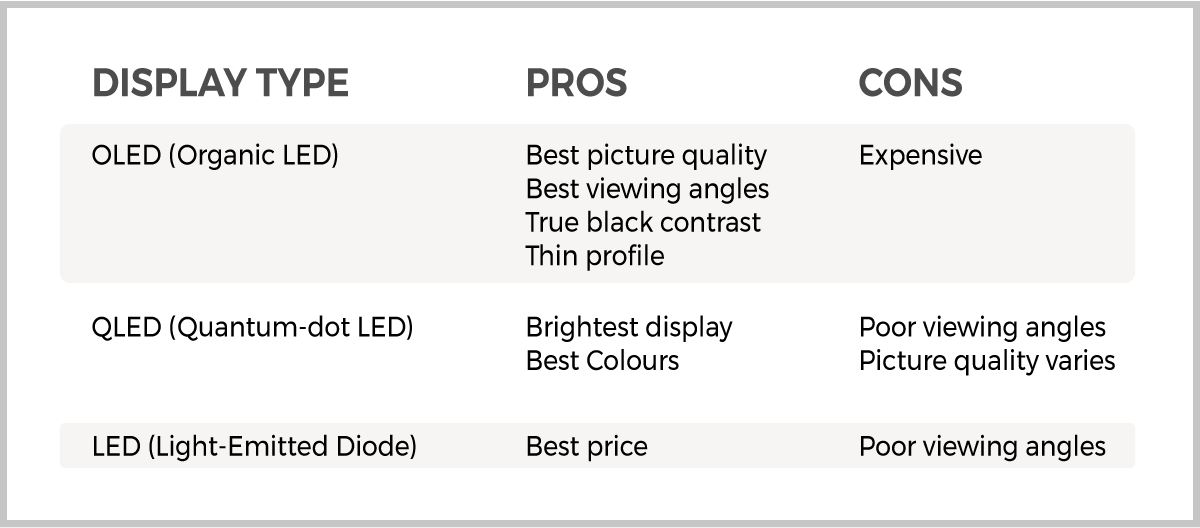

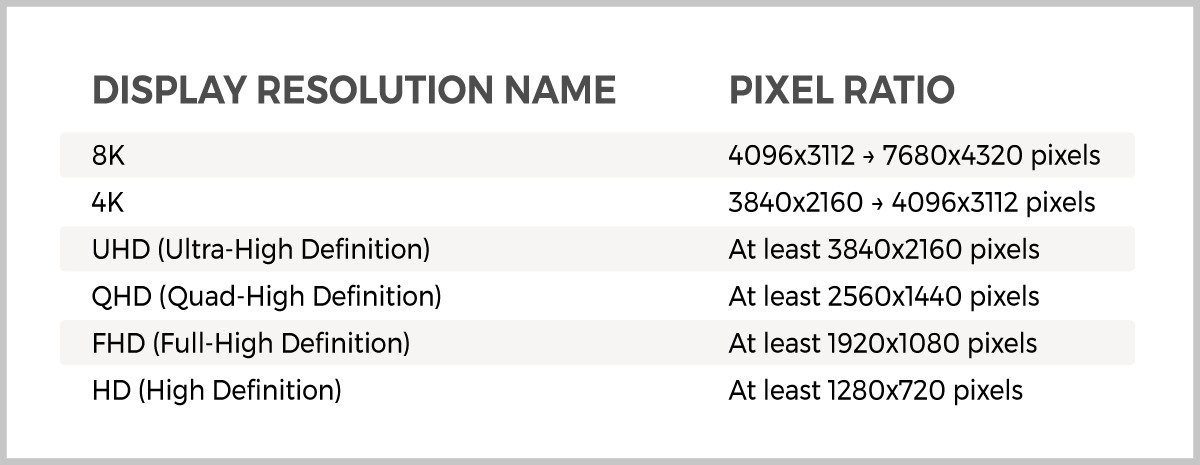

3. The Right TV for Your Room
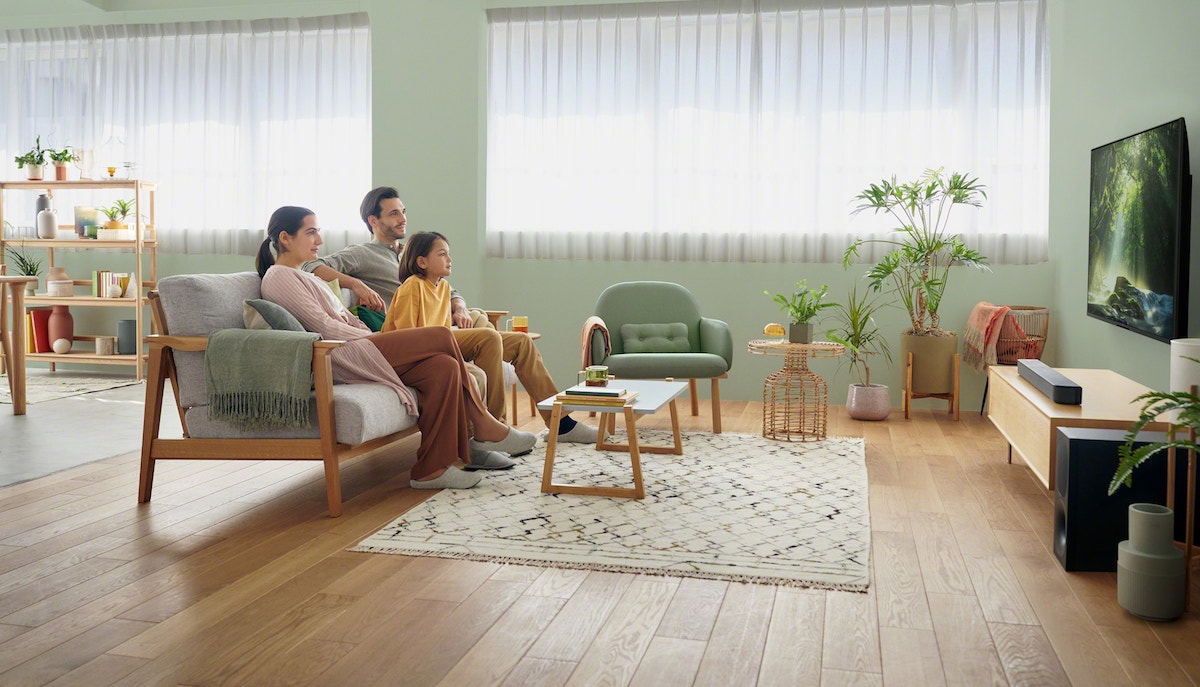

A big screen isn’t always best, it’s all about what is right for your space. Here are a few tips to take into consideration:
- The typical viewing distance from person to screen is 9 feet. The higher the resolution, the closer you can sit before you'll notice pixelation.
- Is your seating not straight on? OLED TVs allow for the best views from every seat in the house, so you have more freedom with different room configurations and seating preferences.
- Consider the location of lights and windows. As mentioned above, a matte display can combat reflections and glare.
- Screens are measured diagonally, so when planning for your space, consider that a 50” screen measures 50 inches from one upper corner to the opposite lower corner.
Our favourites at 50” and under:



